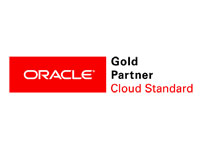Blog
Oracle Data Relationship Management (DRM) - Automating and Monitoring Action Scripts
Data Relationship Management is an Oracle offering for financial and analytical master data management across ERP, GL, EPM, BI, and DW solutions. It is a one-stop shop for enterprise-wide change management - providing flexibility and reducing time while ensuring data integrity, consistency, and accuracy. To do so, DRM comes with a Windows command-line utility such that many DRM operations can be automated and scheduled, and errors are monitored with ease.
Start by creating a simple batch script to run the batch client (stored in the DRMDIR mentioned below, by default) along with the configuration file.
DRMAutomation.bat::Set Variables
SET DRMDIR=E:\Oracle\Middleware\EPMSystem11R1\products\DataRelationshipManagement\client\batch-client
SET SCRIPTDIR=E:\ ConfigFiles
SET ACTSCRDIR= E:\ ActionScripts
SET LOGDIR=E:\ LogFiles\
SET DateTimeString=%date:~4,2%_%date:~7,2%_%date:~10,4%
SET LogName=%LOGDIR%\DRMAutomation_%DateTimeString%.log
::run config file if a new action script exists in the action script directory
if exist %ACTSCRDIR%\ DRMAutomation.csv (call %DRMDIR%\drm-batch-client.exe /cfgfile=%SCRIPTDIR%\DRMAutomation.cfg
ren %ACTSCRDIR%\ DRMAutomation.csv DRMAutomation_%DateTimeString%.csv
move %ACTSCRDIR%\ DRMAutomation_%DateTimeString%.csv %ACTSCRDIR%\Archive\)
::Rename log with timestamp
ren %LOGDIR%\ DRMAutomation.log DRMAutomation_%DateTimeString%.log
exit
Code can be added to the sample script such that the timestamped log is monitored and sends out emails notifications to the administrators if an error occurs.
Further, schedule the batch script to run via the Windows Task Scheduler to make it even more hands off.
The last part of the process is to create the configuration file that will provide the login information, log name and further details about the order of operations and their parameters. The file is divided into named sections (within square brackets) of which the general section is mandatory for all config files and the operations section is crucial when running multiple operations from the config file. The remaining sections are added as required for each operation and have different parameters for each type of operation.
DRMAutomation.cfg
[General]
Operation=Multiple
URL="net.tcp://localhost:5210/Oracle/Drm/ProcessManager"
LogFileName="E:\ LogFiles\ DRMAutomation.log"
[Operations]
OperationCount=3
Operation1=BackupCurrentVersion
Operation2=RunActionScript
Operation3=ExportBook
[BackupCurrentVersion]
Operation=BackupVersion
VersionAbbrev="CURRENT"
Connection="ServerName"
FileName="CurrentVersionBackup.txt"
[RunActionScript]
Operation=ActionScript
InFile= LogFileName="E:\ ActionScripts\ DRMAutomation.csv"
Delimiter=comma
[ExportBook]
Operation=Export
ExportType=Book
BookName="All_Exports"
CurrentVersionAbbrev="CURRENT"
Note that the parameters for some operations are named objects that need to be created prior to running these processes. For example, to successfully run the scripts above, the external connection for a backup operation and the export books need to exist in DRM.
For further information about the configuration file commands and parameters, see the Using the Data Relationship Management Batch Client section of the Oracle DRM User Guide.
Contact MindStream Analytics
Want to learn more about DRM and other Oracle Hyperion offerings? Please complete the form below - the consultants at MindStream Analytics are here to help.
Partner SpotLight

Oracle
Oracle has the most comprehensive suite of integrated, global business applications that enable organizations to make better decisions, reduce cost..
